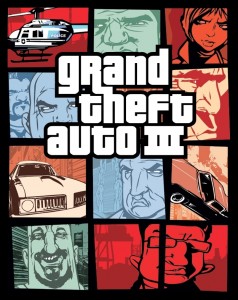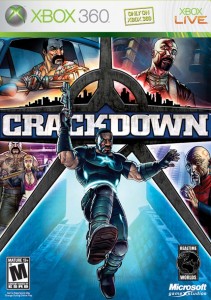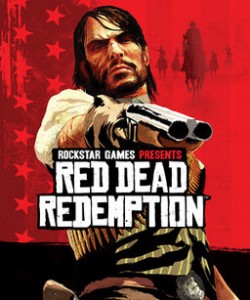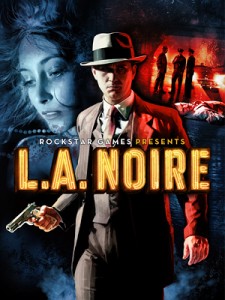 Grand Theft Auto III changed everything. The GTA series is one of the most popular in the history of video games, but it was Grand Theft Auto III that really made the largest impact. Being able to go anywhere and do anything you wanted was, at the time, something we just never thought could happen. Today, a sandbox game is nothing special; we see it in a lot of games today, with implementations ranging from great to pointless. What is it about these games that are so attractive to gamers?
Grand Theft Auto III changed everything. The GTA series is one of the most popular in the history of video games, but it was Grand Theft Auto III that really made the largest impact. Being able to go anywhere and do anything you wanted was, at the time, something we just never thought could happen. Today, a sandbox game is nothing special; we see it in a lot of games today, with implementations ranging from great to pointless. What is it about these games that are so attractive to gamers?
I love games with a good structure to them, linear or non-linear, but having a game that allows you to do whatever you want in between sections of the story or campaign? That’s always something special. A sandbox can allow gamers to really connect with the world they are in and gives the designers a chance to make the world a character of its own. Or it can just be good for blowing everything up in your path for no good reason at all.
 As I mentioned earlier, Grand Theft Auto III is not only the real original sandbox game, but it also exemplifies both instances I mentioned above. Not only does it allow you to really get connected with Liberty City, you can also pull out a rocket launcher and aim it at passing cars if you feel the need to blow off some steam. Yes, earlier games in the series allowed you to do this, but putting it in a 3D space really made it special.
As I mentioned earlier, Grand Theft Auto III is not only the real original sandbox game, but it also exemplifies both instances I mentioned above. Not only does it allow you to really get connected with Liberty City, you can also pull out a rocket launcher and aim it at passing cars if you feel the need to blow off some steam. Yes, earlier games in the series allowed you to do this, but putting it in a 3D space really made it special.
Of course, this destruction had to be limited in some way, so the wanted level system was retained from the earlier games in the series, making sure that if you got too crazy with your chaos, you would still be stopped no matter what. Other games continued with this tradition, although some just let you outright cause as much chaos as humanly possible. A restriction is necessary in a lot of instances, but sometimes you just need a game that lets you go as crazy as you want without much in the way of obstacles.
The first game that really helped the player feel all-powerful was The Incredible Hulk: Ultimate Destruction, but there was always something stopping you from going too power-hungry. And then Crackdown came around and changed everything, at least for me. It implemented the same kind of law enforcement that prevented you from going too crazy, but soon enough the “keys to the city” mode was released as free DLC. This let you spawn whatever weapons and items you wanted and also gave you unlimited health and power, basically turning the game’s city into your own playground.
 Nobody played Crackdown for the story or the missions. They played it for the character abilities and the destruction. You were a human, but you also felt powerful. Being able to leap from building to building and fall down great distances without much repercussion is always fun. Prototype and inFamous both tried this and, to some extent, both were successful. Prototype’s chaotic New York City was far less interesting to explore, but the powers bestowed upon you made up for it and gave it more of a Crackdown vibe than most other, similar games.
Nobody played Crackdown for the story or the missions. They played it for the character abilities and the destruction. You were a human, but you also felt powerful. Being able to leap from building to building and fall down great distances without much repercussion is always fun. Prototype and inFamous both tried this and, to some extent, both were successful. Prototype’s chaotic New York City was far less interesting to explore, but the powers bestowed upon you made up for it and gave it more of a Crackdown vibe than most other, similar games.
Let’s also look at the superhero genre. I mentioned The Incredible Hulk: Ultimate Destruction, but for these games, it all began with Spider-Man 2. It gave you free rein over Spider-Man’s abilities and allowed you to explore New York City as much as you wanted. Swinging around NYC in Spider-Man 2 is still one of the most enjoyable gaming experiences I’ve ever had, and it made it clear that games that give you superpowers should allow you to use them in a sandbox environment.
Even without superpowers, the right gadgets can make all of the difference. Just Cause 2, by all means, does not have a compelling single-player campaign. What it does have is an excellent open world and one amazing piece of technology: the grappling hook. You can grapple onto buildings, cars, planes, and even people to create some of the most enjoyable free-roaming experiences you’ll ever have.
 And then we have the very story-heavy games, like Fallout 3 and Red Dead Redemption. These games really breathe new life into sandbox games by providing you with excellent worlds to explore, but not allowing you to go absolutely crazy inside of them. Giving you ample reason to explore a game world beyond just blowing things up is always welcome, and these two games did it right above any other.
And then we have the very story-heavy games, like Fallout 3 and Red Dead Redemption. These games really breathe new life into sandbox games by providing you with excellent worlds to explore, but not allowing you to go absolutely crazy inside of them. Giving you ample reason to explore a game world beyond just blowing things up is always welcome, and these two games did it right above any other.
A major problem that is brought up with these games, specifically Red Dead Redemption, is the lack of connection between the story events and what you do with the character outside of these events. John Marston, the main protagonist, is someone trying to, well, redeem himself, but outside of the missions you can find yourself robbing banks, killing innocents, and doing all sorts of misdeeds that don’t feel appropriate to the character you’ve come to know.
This is a legitimate problem with sandbox games, especially those trying to deliver a heavy narrative. While it is fair to say that you can simply not do those things, allowing your John Marston to match up with the game’s John Marston, but there are no restrictions on what he can and cannot do. This is both a good and bad thing, really splitting a lot of the audience in half on whether they feel this sort of design is appropriate for a game like this.
 L.A. Noire attempted to limit what you can do outside of the story, but it just left a lot of people wanting more. While it is a joy to see 1940s Los Angeles lovingly recreated, you never have any reason to explore or go outside of where you are meant to, and Cole Phelps never pulls out his gun for any reason except when necessary. You are penalized for hitting cars and driving over pedestrians, making the sandbox merely an illusion and not a fully-realized world.
L.A. Noire attempted to limit what you can do outside of the story, but it just left a lot of people wanting more. While it is a joy to see 1940s Los Angeles lovingly recreated, you never have any reason to explore or go outside of where you are meant to, and Cole Phelps never pulls out his gun for any reason except when necessary. You are penalized for hitting cars and driving over pedestrians, making the sandbox merely an illusion and not a fully-realized world.
Some appreciate what Team Bondi did here, which made sure that the same disconnect you find in Red Dead does not happen here, but it also gives you little reason to do anything but the story. Mafia II had a similar problem, presenting you with a fully-realized city with little to no reason for you to explore. It’s an interesting experiment, but one I feel does not benefit this style of game at all.
It’s clear that the sandbox game has evolved quite a lot from the days of Grand Theft Auto III, almost to the point where you find two different styles of sandbox experiences. It’s hard to say where these games will go in the future, but I do find that a sandbox game, if done right, can benefit the experience overall. Should all games allow you to free roam outside of the structure of the game’s campaign? Not at all. But if done right, you can create a unique experience that allows your players to get lost in a virtual world.



















